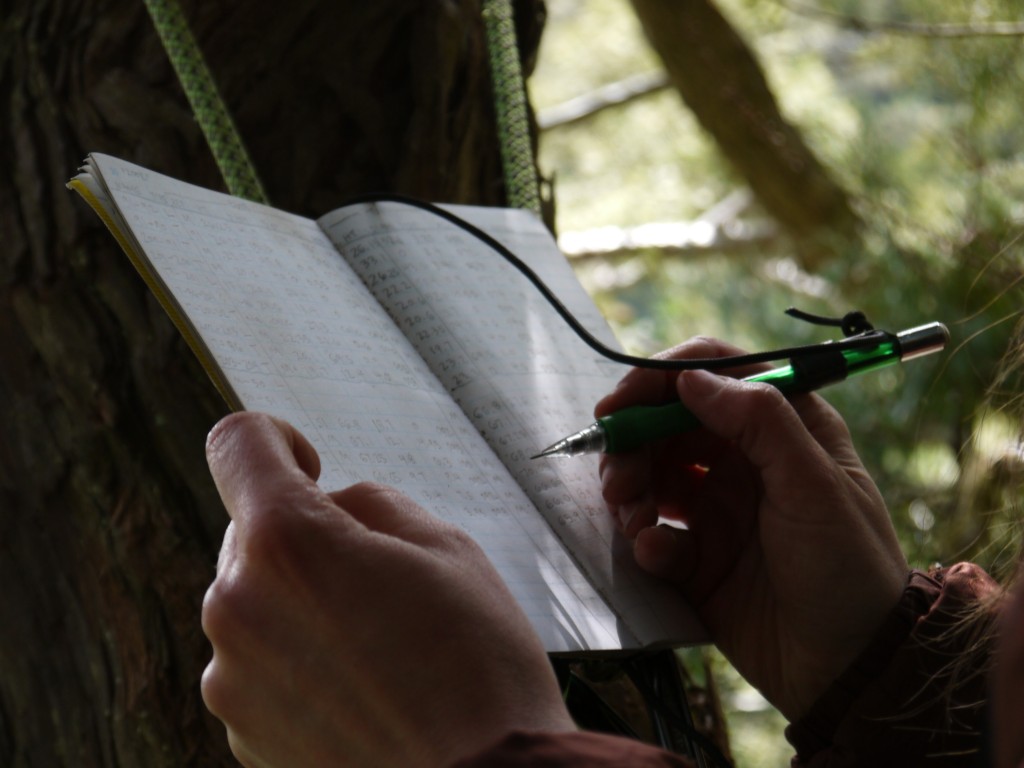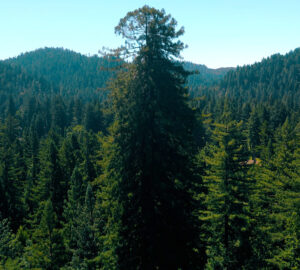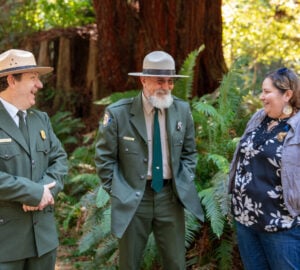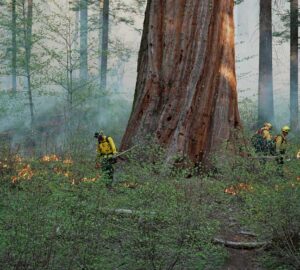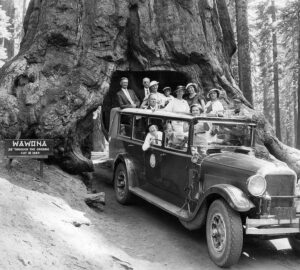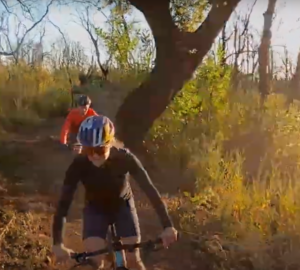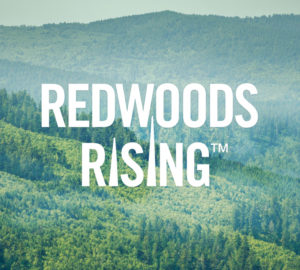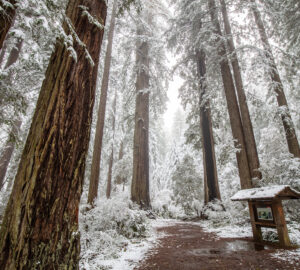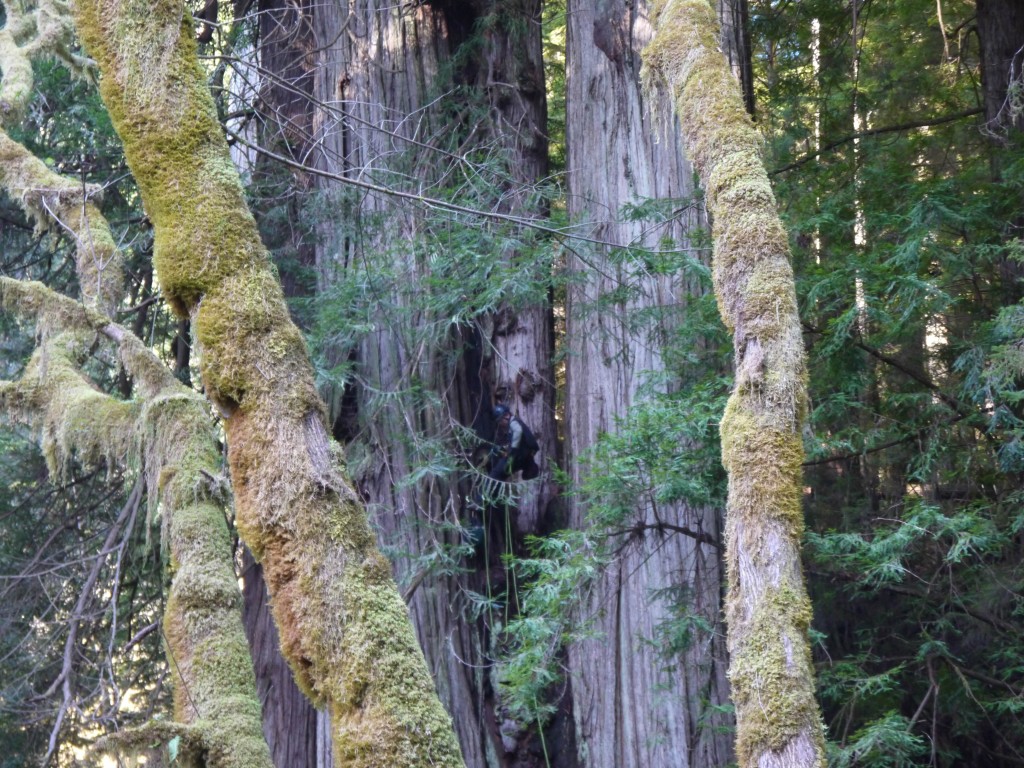
Harness cinched. Helmet buckled. Camera and notebook tucked in tightly. Knowing this was one of the last days this spring to collect coast redwood canopy data, we scurried up climbing ropes into the leafy forest canopy of Del Norte County.
With my research colleagues from Humboldt State University, we got busy measuring the size and shape of the enormous redwood we dangled from in order to estimate how much carbon dioxide is locked up in the wood of this ancient tree. The size and shape of each redwood tells a story of how the forest treated the tree as it grew. For some of the oldest redwoods, centuries of wind storms, lightning, and competition with neighboring trees have caused the truck to split and bifurcate multiple times, creating a castle-like crown that thrusts skyward.
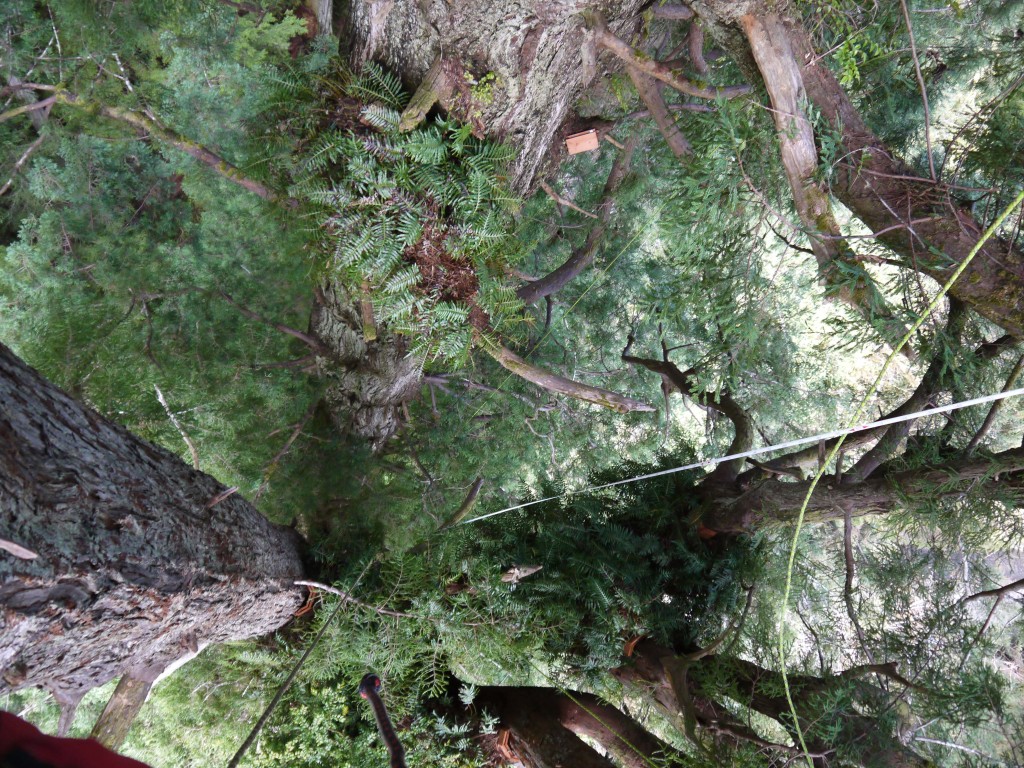
It’s difficult to estimate the dimensions of a gnarly redwood from the ground because the tree’s branches and multiple trunks are often hidden from view by legions of fluttering leaves. When hanging in the canopy however, we could easily work in pairs to measure segments of the redwood crown. Using this research technique developed by Steve Sillett, we will soon decode just how much carbon this tree is storing hundreds of feet above the forest floor.
Steve and his colleagues have collected these data in forests throughout the coast redwood and giant sequoia ranges as part of our Redwoods and Climate Change Initiative. We’re curious, will the redwoods continue to grow quickly and sequester lots of carbon as climate changes around them?
